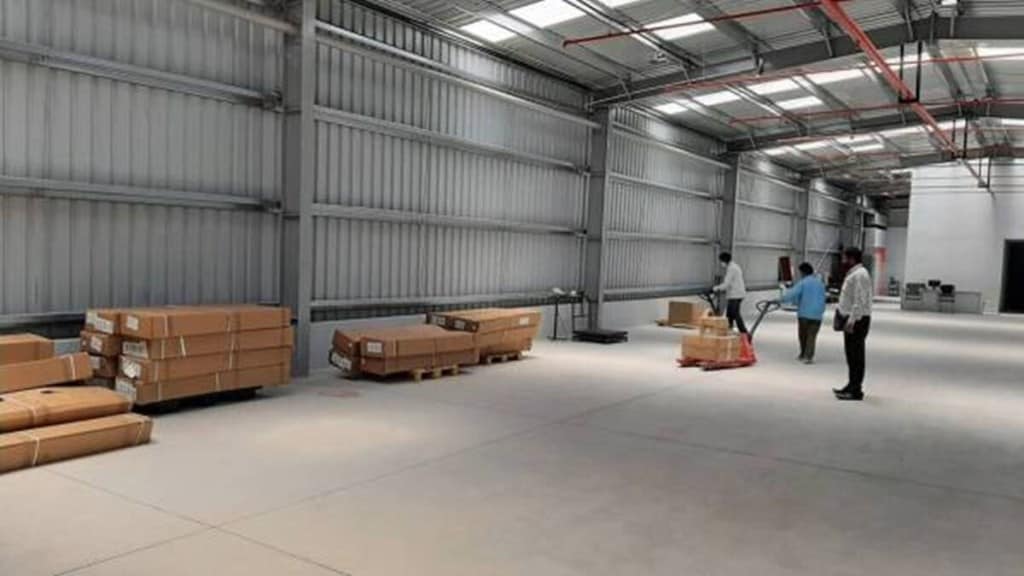The sharp rise in e-commerce and quick commerce businesses in India has led to a good demand offtake for warehousing spaces with majority of the demand coming in for Grade A warehousing spaces. However, significant rise in construction costs due to high commodity prices and global supply chain disruptions have impacted profitability of warehouse developers, with some also seeing a delay in their new capacity additions.
The net demand in 2022 is likely to surpass the demand for warehousing space seen in 2021, with the first six months of 2022 seeing close to 20 million square feet absorbed versus 39.5 million square feet of net demand witnessed in the entire of 2021, according to data sourced from JLL India. The overall supply witnessed a CAGR of 17% during 2016-2021 to 258 million square feet with increase in Grade A supply mix from 30% in 2016 to 45% in 2021, according to ratings firm Icra.
Also, the demand is primarily for Grade A warehousing space with 75% of demand in 2021 coming for quality warehouses and an equally good number — at 65% of this demand coming in January-June 2022 for Grade A space.
Also read: India at 75: The growing EVolution in auto industry
Covid-19 pandemic was a difficult period for the warehousing industry and coupled with global supply chain issues and the rising commodity inflation, developers have seen delays in getting new supply on stream as well as decline in profitability. While the demand has remained robust, the rents for warehousing facilities have not risen as much, creating a challenge for operating margins of warehouse developers.
Average rentals in Indian warehousing space in top eight cities has remained range bound in the last four years. In 2018, average rentals of Grade A and Grade B put together were at Rs 121 per square feet per month, while in 2021 it touched Rs 126 per sq ft per month. In the first half of 2022, the rents were at around Rs 129 per sq ft per month, according to JLL data.
Mathew Kurian, vice president, Icra said, “Given the sharp increase in steel prices over the past year, the developers have gone slow on awarding fresh construction contracts and focused on leasing the available area. This is expected to reduce the vacancy by end of CY2022.”
Rampraveen Swaminathan, managing director and CEO, Mahindra Logistics, recently told analysts at an earnings call that the company is going live and has several launches planned on its warehousing piece in the July-September quarter, however, the projects have seen some disruptions on account of weather conditions and commodity price fluctuations. Company’s last block in the upcoming facility in Luhari, Haryana was delayed due to weather issues and government regulations around that.
“Also, with commodity prices going up substantially, many of our vendors have come back for price increases, we have to negotiate downwards again, which has resulted in some delays,” he told analysts. However, its planned four million square feet of warehouse space will get completed within this year. Also, two million square feet has been tendered and is getting into construction as well.
In case of a sustained increase in input prices by more than 15% from current levels, Icra estimates that the warehouse developers could increase the rental rate by Rs 1-2 per sq ft per month, to neutralise the impact of the input cost pressure on their equity IRR.
Shailesh Kumar, founder CABT Logistics, said that approximately 30% of warehouse construction is accounted for by steel, making it a major spending area during setting up warehouses. However, with the drop in steel prices, construction companies and the logistics sector could get some relief on costs, and logistics companies could look at passing on those benefits to consumers. “Hopefully, the logistics portals might offer promotions such as same-day delivery discounts or delivery discounts for better customer retention owing to reduced costs, but it remains to be seen if it will have any significant effect on prices of products as such,” he said.
Even as fluctuating costs are making companies tense on construction costs, they are adopting technology to make operations more efficient. “We plan to integrate technology into our supply chain automation platform to provide extensive visibility. “With our tech, we provide dockyard and hub automation, asset tracking, vehicle tracking and various other tools that make operations more efficient,” said Rahul Mehra, co-founder, Roadcast that raised Series A $2 million from Jubilant Foodworks in July 2022.
CABT Logistics is also investing in optimising routes for delivery, which otherwise results in energy wastage and delays in deliveries. “We are also gearing up to invest nearly Rs 5 crore to build about 60 micro-fulfilment centres across India. The investment will ensure that CABT Logistics is equipped to help businesses scale up by furnishing orders in a timely and cost-effective fashion. The first phase of expansion will witness the setting up of 30-35 micro fulfilment centres in tier 1 cities,” Kumar said.

